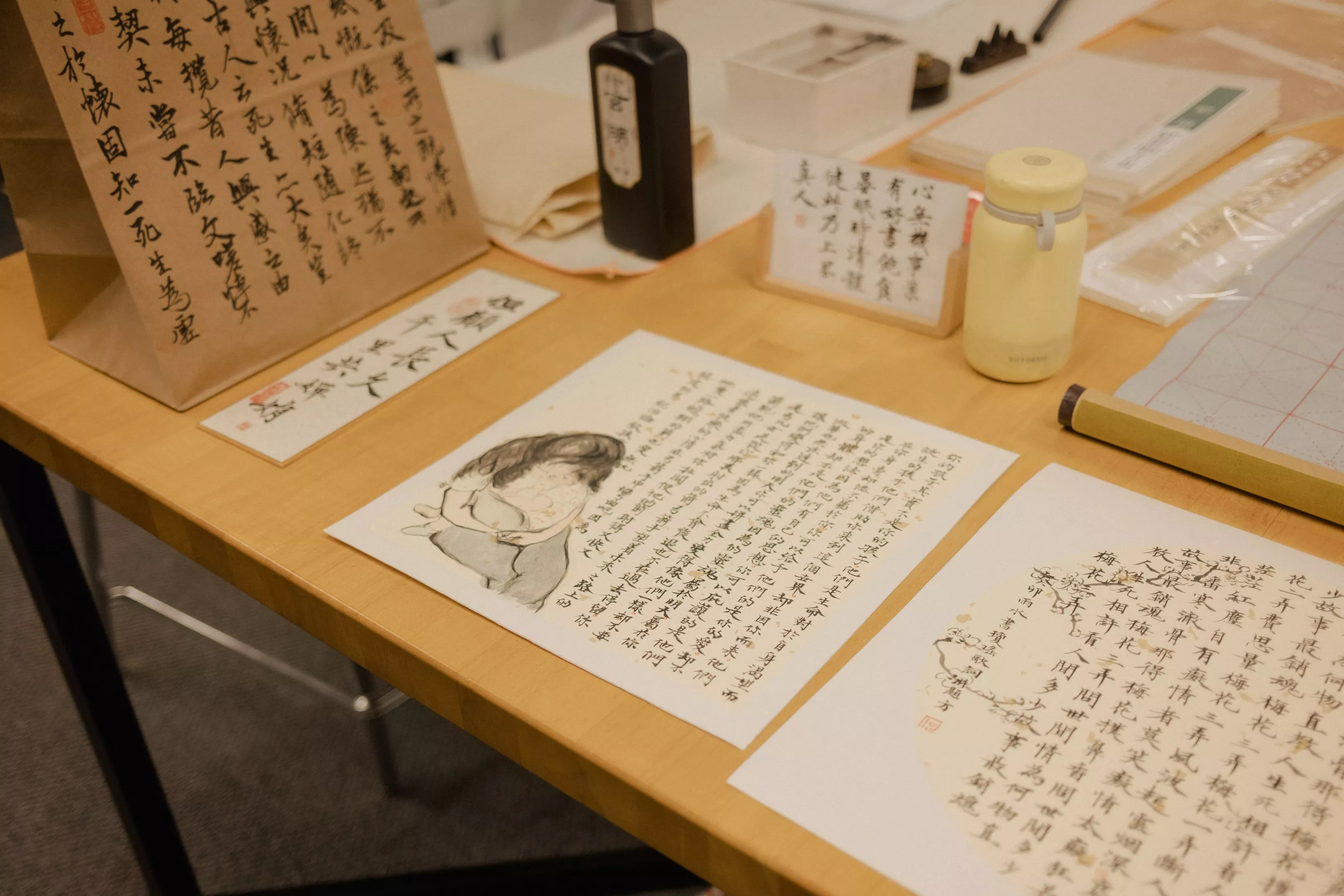
Rachel Schellsmidt

Audio By Carbonatix
Dallas is a place with many stories. The city’s history is often eclipsed by rhinestones, oil money, bottled blondes and presidential tragedies, and while these things are undoubtedly a large part of who we are, there is danger in maintaining a limited narrative. Most of the stories that lie outside of it tend to be woefully overlooked and sometimes completely lost to history. Let’s face it, we are notoriously bad about preserving things here; nobody bats an eye when a 150-year-old building is bulldozed and replaced with a soulless megabar.
Nonetheless, Dallas has a richly diverse history, but you have to do a little digging to find it. Actually, you have to do so much digging that you may need to look into renting an excavator. Luckily, Stephanie Drenka is willing to get her shovel out. She has dedicated her career to telling the stories of those whose voices have been ignored, specifically those in the Asian American community.
Drenka is the co-founder and executive director of the Dallas Asian American Society, which has a mission to “research, preserve, and amplify the legacy of Asian Americans in the Dallas area.”
As a Korean American, Drenka has a special connection to Dallas Asian American history. She believes that “Asian Americans are often victims of perpetual foreigner syndrome, which harms our community and undermines our long history with this country.”
This is part of what drives her work: Drenka wants to break down the sense of otherness that is imposed upon Asian Americans by amplifying Asian American stories and voices.
Recently, the Dallas Asian American Society has shifted its focus to the Chinese community and is working on a captivating new art exhibition that showcases the intriguing and sometimes fraught history of Chinese restaurants in the city.
Dallas is not San Francisco, New York or any other city where you can see, touch and experience the physical history of Chinese American communities in Chinatowns and hundred-year-old Chinese restaurants. We have long since destroyed any traces of the first Chinese establishments of the late 19th century. However, as in those other cities, Chinese and other Asian communities have been an integral part of Dallas since its inception (or at least very close to it).
The first wave of Chinese immigrants came to Texas in the 1870s. They were mostly working-aged men from the southern Chinese province of Guangdong who made their way to Dallas from Houston after a labor strike at the Houston and Texas Central Railway. The Chinese workers were not being paid, so they quit and filed a lawsuit against the company. Since job opportunities were then scarce, they opened laundries and a few restaurants and took on various other domestic jobs where available.
J.L Chow was the first Chinese American listed as a resident of Dallas in 1873; he opened a laundry at 904 Elm St. in 1874. There were several other laundries and some restaurants located near the city center, and business was thriving. However, things were not always so rosy; anti-Chinese sentiment had been brewing in the U.S. for some time, and with the imposition of the Chinese Exclusion Act in 1882, things started to break down. As the Chinese population continued to grow, discontent followed.
Over the next decade, white Dallasites made life increasingly difficult for Chinese business owners. They harbored a deep resentment toward their success, as it contradicted their ingrained racist ideologies about the inferiority of non-white communities. Predictably, they resorted to some very on-brand behavior by spreading xenophobic lies and stoking existing racial tensions. They falsely claimed that patrons of Chinese businesses would contract mysterious diseases (sound familiar?). They portrayed Chinese men as effeminate for doing “women’s work,” and they disseminated a range of other harmful sinophobic stereotypes. Their goal was to instill fear and, unfortunately, their hateful tactics proved effective. The Dallas laundry industry was eventually entirely taken over by white business owners.
That extended racism campaign certainly set the Chinese community back, but it was not enough to stop them. Like most immigrants, they were incredibly resilient, so they pivoted. The new focus was food: specifically, restaurants and grocery stores. Jim Wing, initially a laundryman, made a remarkable transition to become a pioneering Chinese restaurateur in Dallas. In 1896, his venture Jim Wing & Co. acquired Moon Restaurant, marking a significant milestone. Continuing his entrepreneurial journey, he further expanded his influence by establishing Star Restaurant in the early 1900s.
Jim Wing’s achievements laid the foundation for his own success and set a precedent for future generations of Chinese restaurateurs. Eventually, the Chinese Exclusion Act was repealed in 1946. This brought in the second wave of Chinese food ventures in the late 1940s, which in turn paved the way for the third wave in the 1960s. This surge saw many Chinese restaurants relocating to the suburbs, where they continue to thrive and grow today.
Upon witnessing the dramatic reemergence of widespread Asian hate and anti-China rhetoric during the pandemic, Stephanie Drenka and Denise Johnson, the other co-founder of the Dallas Asian American Society, began a project of uncovering the little-known history of Dallas Chinese restaurants. They wanted to establish a profound connection between the contemporary Asian American community and its extensive yet relatively unfamiliar past.
“[We] wanted to shift the narrative on the Asian community, to make people aware that Asian people have been here for as long as everyone else, and they have earned their right to claim ownership of this city,” Drenka says.
She dug through the archives and painstakingly pieced together fragments of what information she could find and began to discover old matchbooks and menus from some of the bygone Chinese restaurants.

Leftover: The Enduring Legacy of Chinese Cuisine at Preservation Dallas explores the incredibly resiliant history of Chinese immigrants in Dallas.
Rachel Schellsmidt
“I began searching on eBay for matchbooks, menus, anything I could find so that I could buy them in order to preserve them before they were lost yet again,” Drenka says.
The project gained significant attention and was the subject of a Dallas Morning News article. From there, something completely unexpected happened.
“We started getting calls from people whose families had owned some of these restaurants; they had photos and oral histories that were previously completely unknown outside of their own family stories,” Drenka says.
She knew she had to do something with this newfound trove of historical treasure, that this story needed to be brought to light in a way that is as special as those who are a part of it.
“Since we don’t have a lot of tangible information or a solid historical record of a lot of this history, we have to reimagine it with art and creativity, and oral history, to piece together an impactful story,” Drenka says.
This created the perfect opening for Christina Hahn, the curator and creative director of what is now known as, Leftover: The Enduring Legacy of Chinese Cuisine in Dallas.
Hahn and Drenka met in passing a couple of years ago. Hahn later reached out to Drenka with the hopes of beginning a mentorship, to which Drenka replied, “I have a job for you.” The rest is history in the making.
Hahn immediately got to work bringing her bold and personal vision to life, and within just six months, she transformed it into a captivating show, almost ready to be unveiled. She wanted the project to be “by Dallas, for Dallas” and she has succeeded greatly at it. The artists who created the bulk of the works are Dallas high-school students, mostly Chinese, but also from other Asian backgrounds.
“I wanted to tell another story separate from the many stories of trauma that our community has faced,” Hahn says about her choice of working with high school-aged artists. I want to add positive stories to our history, and I want to give the kids the ability to take that on and take that with them throughout their lives.”
The project has benefited from numerous invaluable contributors, including dedicated volunteers from the Dallas Asian American Society, the Dallas Asian American Art Club and an array of supportive friends and community members. The venue, offered by Preservation Dallas, is hosting its first exhibition centered around Asian American Dallas history.
Hahn’s conceptualization brings an innovative, fresh and exciting approach to history and art. She intends to captivate audiences through a series of vignettes that introduce them to this hidden chapter of Dallas history, fostering familiarity and ultimately enabling deep empathy and understanding for the intricate lives of individuals who have devoted themselves to food, family, community and survival.
Drenka and Hahn have similar hopes for what people will take away from the show.
“Most non-Asian people’s introduction to Asian culture is through food, so I really hope to highlight how important food is in Asian culture and understand the deep history and meaning that lies behind it,” Drenka says. “I also hope that Asian people especially can see themselves in the show, see their families, and I hope it inspires them to believe that their stories are important and worth telling and documenting.”
The exhibition’s recurring emerging theme is resilience, an indispensable key of profound significance in many immigrant stories. Often, the individuals who are solely focused on survival and navigating their daily challenges fail to recognize their own invaluable contributions to culture and history. Drenka is determined to ensure that their accomplishments are rightfully celebrated, recognizing their inherent worthiness.
This exhibition is special and important, and it’s the first but, hopefully, not last, of its kind. It’s the kind of thing that our city needs, a thoughtful remembrance of our history. We need to tell more stories, all of our stories. Dallas may have a reputation for being a cultural wasteland, but that could not be further from the truth.
Hahn hopes for “this to be a story that every American can relate to, one of family, endurance, and resilience. It takes a great amount of strength to leave your home, your culture, and your family, and many of the Asian Americans who did that not only overcame the initial hardship, but also overcame the discrimination they faced here, yet many were still able to succeed and thrive.”
Leftover: The Enduring Legacy of Chinese Cuisine will run July 7- Sept. 22, at Preservation Dallas, 2922 Swiss Ave.